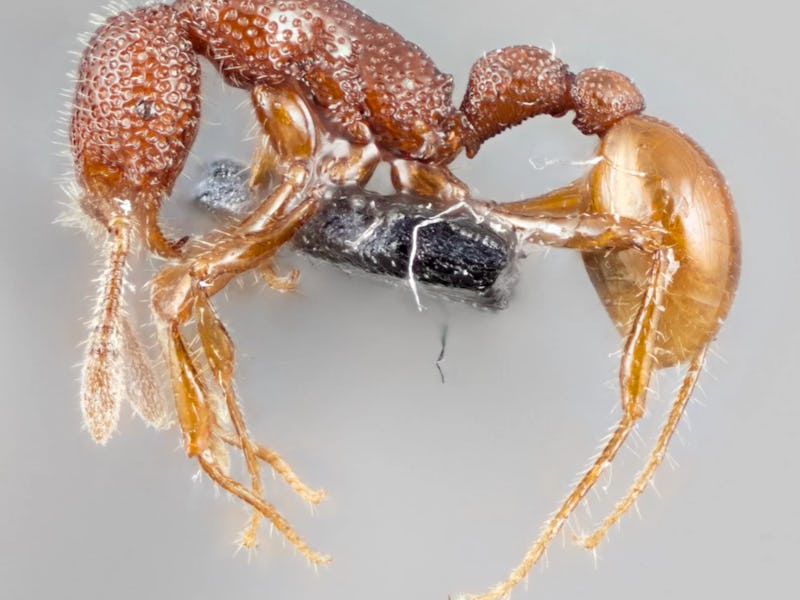Humans Just Got the First Glimpse of a Live T. Rex Ant
Scientists have been looking for 14 years.

Fourteen years after the species was discovered, the carnivorous T. Rex ant has just been seen alive for the first time. The finding has answered many of scientists’ most pressing questions about the insect, but also left many mysteries unsolved.
A single dead Tyrannomyrmex Rex ant was found in Malaysia in 2003, prompting its classification as a new species. The explorer named the tiny creature after an enormous dinosaur because its undersized mandibles reminded him of the arms of a T. Rex. Since then, other dead T. Rex ants have been seen in Singapore, India, Sri Lanka, and possibly the Philippines, all accidentally found in leaf litter.
Now we finally have a living example. Explorer Mark Wong came upon a colony of T. Rex ants while literally digging around a forest in Singapore. “The best way to collect and observe live ground ant colonies is to really get your hands dirty, by gradually excavating the soil from an area, layer by layer — sort of like an archaeologist,” he told National Geographic.
T. Rex Ant Seen Live for the First Time
It turns out that, besides being an occasional carnivore, the T. Rex ant isn’t really that scary (but hey, neither was the Tyrannosaurus Rex itself). In fact, the ant is shy and a picky eater. Researchers tried to offer the insects food samples from typical ant diets — everything from mites to millipedes to honey — but the ants wouldn’t even approach the offerings. “I had a good laugh,” Wong said of seeing this timid response.
Now that researchers have been able to observe some T. Rex ants in their natural habitat, we know that the insects are nocturnal and live in colonies of around 30. When faced with a threat, the ants curl up and freeze instead of fighting.
However, there’s still a lot that we don’t know. We don’t know what the ant’s primary diet contains. We don’t know why they lack the metapleural glands of other ants, which normally create antiseptic compounds that help ants stay clean. Since T. Rex ants live under the ground in a “presumably pathogen-rich environment,” explains Wong, the absence of these glands is “truly puzzling.”
Wong says that this finding demonstrates that researchers need to look for ants below the surface of the ground more often.
The T. Rex ant sounds pretty neat, but no ant can top the P. dentata, which doesn’t demonstrate any effects of aging.